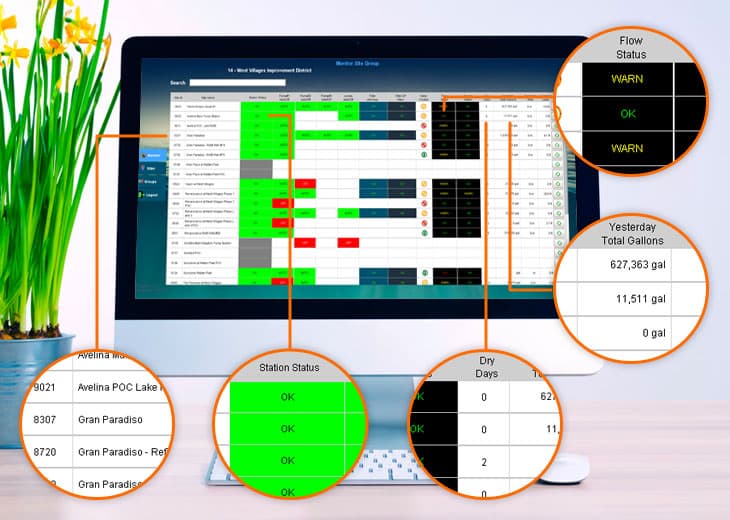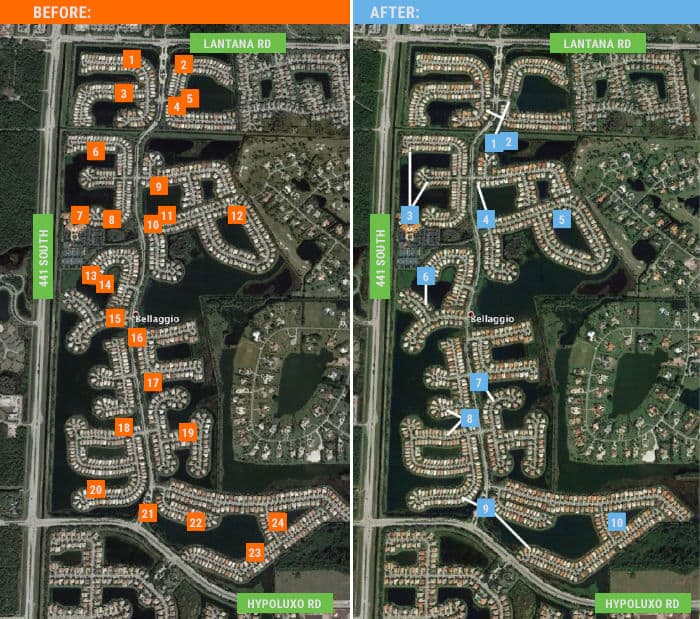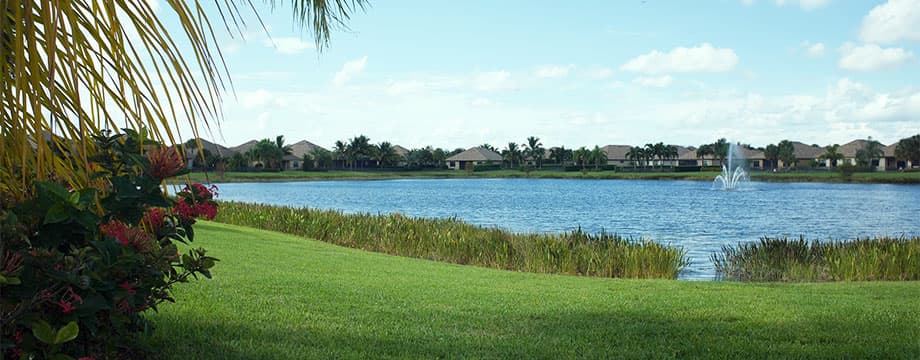
Florida. Sun-drenched, yes, but its unique climate—scorching summers, high humidity, unpredictable storms, and sandy soils—presents a significant challenge for maintaining perfect, healthy green spaces.
Whether for sprawling residential communities, immaculate golf courses, or high-performance sports fields, effective irrigation isn't just a convenience; it's a critical necessity. Yet, beneath those green surfaces, we know that many organizations grapple with persistent, costly irrigation problems, often stemming from fundamental flaws in initial planning and purchasing.

Businesses across Florida frequently encounter a range of daunting irrigation issues that don't just drain budgets but cause major operational headaches.
We're talking constant mainline breaks, leading to high repair bills and the need for expensive annual sod replacement—imagine a community wasting $40,000 a year on sod, just to keep things green.
Other common pain points are systems that are, in the words of one of our clients, "held together by bandaids" resulting in thousands of dollars in annual repairs, or issues like clogged sprinkler heads due to sand and sediment from lake bottoms. Beyond direct repair costs, inefficient irrigation leads to wasted water, energy, and fertilizer—a significant concern given Florida's dwindling water reserves and increasing environmental and regulatory pressures. Poor irrigation also results in landscaping struggling to recover from under- or over-watering, and continuing needs for sod replacement, negatively impacting aesthetics and property values.

For property managers and HOA boards, these issues translate into stress, complaints, productivity drains, and even risks to a developer's reputation during the crucial homeowner association turnover process.
A significant contributor to these recurring problems is a fragmented and short-sighted approach to irrigation system procurement and design. Too often, pump sizing is determined prematurely, before the irrigation design is fully developed, leading to mismatched and inefficient systems.
This reflects a profound lack of "joined-up thinking" where critical advice is needed early in the process but, for some reason, isn't sought - and even if it is available, it isn't incorporated.
Another pervasive issue? The singular focus on minimizing upfront costs. This is a fallacy that consistently results in substantially higher long-term expenses from constant repairs, excessive energy consumption, and water waste. This short-term perspective often leads to the adoption of outdated advice and a resistance to embracing modern advancements. Here are some "red flag" statements we commonly hear that betray a limited understanding of best practices:
What's more, many systems are "under-designed" or simply not adequately tailored for Florida’s specific, challenging climate. Think high humidity, soaring temperatures, fluctuating water tables, and even saltwater corrosion reaching miles inland. And then there’s the widespread acceptance of a "break and fix" service model, where routine maintenance is neglected in favor of reactive repairs.
This approach, quite frankly, only benefits the service provider, locking property owners into a cycle of escalating expenses and stress. This often involves outsourcing daily irrigation management to contractors who "struggle to stay on top of things" without proper tools or oversight.
So, what’s a smarter path? A more effective methodology to irrigation system design, installation, and management emphasizes long-term value, efficiency, and reliability. This pioneering approach begins with a holistic and custom design process, moving beyond "boilerplate systems".

It involves in-depth consultations with engineers and irrigation experts to understand the unique requirements, microclimate, water table, and water source of each project. This ensures that systems are "designed to last and to work at consistently high levels of efficiency," providing "total lifetime value" that far outweighs any initial cost considerations.

This approach, thankfully, leverages advanced technology to provide unparalleled control and efficiency. This comes in the form of:
Crucially, this comprehensive approach extends to proactive support and maintenance. It replaces the reactive "break and fix" cycle with ongoing preventative maintenance and readily available engineering support for troubleshooting and optimization. This ensures dependable access to irrigation water, reduces expensive repair expenses, and helps keep maintenance budgets under control.

The demonstrable outcomes and benefits of this strategic shift are significant:
The effectiveness of this comprehensive methodology is evident in the transformation of numerous projects across Florida—real-world evidence of success.
Take the Bellaggio project, for example. This residential community once spent a staggering $40,000 annually on sod replacement due to poor irrigation and suffered constant mainline breaks. But they experienced a significant turnaround. We replaced their 24 inefficient pump stations with 10 Hoover pump stations and improved and optimized water intake solutions. The Bellaggio community gained dependably green landscapes with substantially lower energy, water, and fertilizer use, and virtually no repair bills since the overhaul.

Another large master-planned community, PGA National, inherited an aging irrigation system described as being "held together with bandaids", incurring thousands of dollars in annual repairs and causing constant operational headaches. Through a complete system overhaul, including the design and installation of six new pump stations and extensive cable replacement, PGA National's irrigation maintenance and repair bills plummeted, and management gained confidence in their irrigation system. As one property manager noted, "I don’t know how they do it, honestly. They’re on top of it".
And for rapidly expanding communities like Wellen Park, an 11,000-acre master-planned development that will eventually be home to 60,000 residents, we’ve provided a scalable and smart water delivery and management solution. This initially involved over 40 dedicated pump stations, some capable of moving over 4,000 gallons per minute, ensuring the highest standards of water and energy efficiency while managing millions of gallons daily. And the scalability of our solution is matching the water delivery needs of Wellen Park as it grows.

Even communities with sub-optimal systems that caused hundreds of thousands of dollars in landscape damage and drained maintenance budgets have found solutions. For example, at Riverstone, we replaced two underperforming pump stations with a single, well-optimized alternative, resulting in no irrigation pump station repair bills since 2020 and a 90% drop in resident complaints. Similarly, the Castellina Community, facing an inefficient and poorly optimized system, underwent a phased revamp that provided a long-term solution at a much lower cost than starting over, giving the HOA confidence in their irrigation system and partner.
Hoover's proven methodology has been successfully applied across thousands of sports fields, residential developments, and ornamental green spaces throughout Florida, demonstrating extensive experience and a verified track record. As one client stated, "It's about being the best at your craft and Hoover are the best at their craft. They have pride in what they do".
So, what's the bottom line? Investing in a thoughtfully designed, technologically advanced, and well-supported irrigation system isn't merely an expenditure; it's a strategic decision that protects significant investments in landscapes and infrastructure, safeguards a developer's reputation, and ensures long-term financial viability.

By adopting a proactive, expert-led approach that prioritizes custom solutions, leverages intelligent technology for control and efficiency, and provides consistent, reliable support, organizations can finally move beyond that costly "break and fix" cycle.
For those facing persistent irrigation challenges or seeking genuinely reliable and sustainable water delivery solutions in Florida’s demanding environment—and it is demanding—the path forward involves seeking partners who embody these principles. Engaging with experts who possess deep understanding, proven experience, and a commitment to long-term success can transform problematic irrigation systems into dependable assets, ensuring landscapes thrive and operations run smoothly for decades to come.